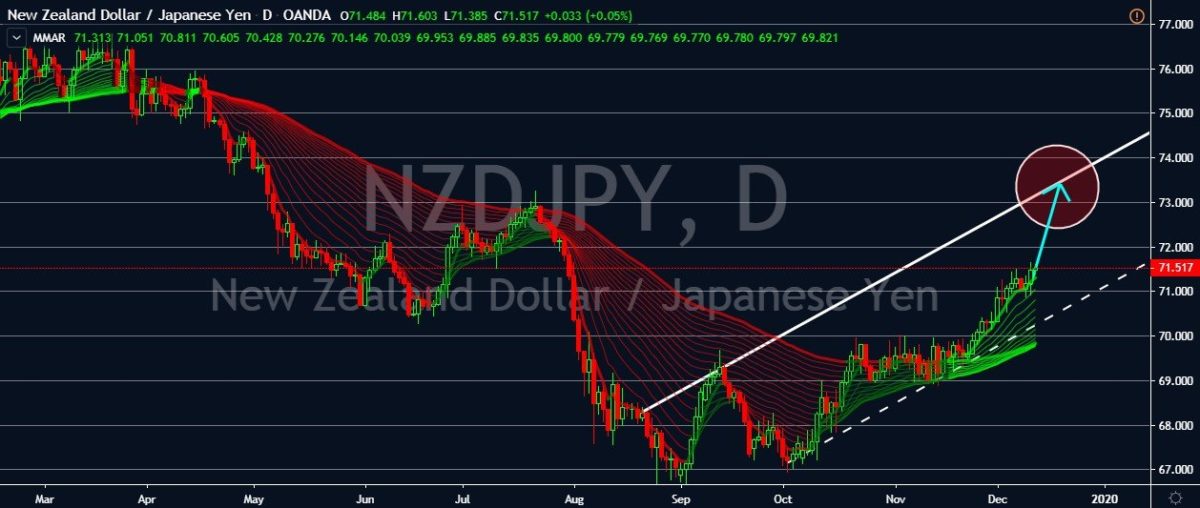Good day traders! Check now the most recent charts and market updates for today’s session. Learn more about analysis and be updated on the current happenings in the market!
EURBRL
Although it is not that of a long way down, the single currency is poised to gradually go down in the coming sessions and possibly its support in early January. The gradual improvements in Brazil’s economy are helping the real regain some of its losses against the Euro in sessions. That, plus the lackluster figures from the eurozone sets a bullish course for the EURBRL pair. Although, earlier this week, the Brazilian central bank unleashed a half-point interest rate cut and setting the country’s rate at record as the country is still below the bank’s inflation target. Now, the bank’s benchmark Selic rate sits at 4.5%. In the central bank’s post-meeting statement, it cleared that it will always be open for further rate cuts in the future to buoy the economy. Looking at it, the cut is what slowed the real in current trading, but it didn’t stop it from keeping the bloc’s single currency in negative territories.

NZDJPY
Despite the Japanese yen’s safe-haven appeal beaming bright around all the trade war uncertainties, the Nez Zealand dollar’s strength cannot be stopped. NZDJPY bears can barely prevent the pair from continuing its uphill climb in trading. The kiwi is very much harnessing every possible strength and is benefitting from the dovish outlook of the US Federal Reserve after it left its interest rates unchanged yesterday. The Fed’s decision raised expectation for easing in early 2020 and sparked the risk appetite of both the New Zealand dollar and the Australian dollar. The kiwi is taking advantage of the moment and is trying to take back some of its major losses against the Japanese yen mid-way through the year. Adding to the New Zealand dollar’s strength is the positive electronic card retail sales that bounced back from the negative figures of October, -0.5%, to 2.6% in November. The result topped over expectations of 0.5% growth prior.

AUDNZD
The latest decision of the US Federal Reserve gave the Aussie and the kiwi a boost. However, the Australian dollar received more power than the New Zealand dollar. The AUDNZD pair plunged in the earlier part of December but bears failed to reel the pair lower and break its support. As the pair bounces from its support, the Aussie sets its eye to take back some of the losses. As it seeks redemption, the Australian dollar will have a long uphill climb against the New Zealand dollar in trading. Bulls are brushing off the good news for the kiwi after the government pledged a boost in fiscal spending earlier this month. Although to be fair, both country’s economies are pumping out dull results as evident on recent reports. There may be a positive reading here and there, but most reports fail to pull out groundbreaking numbers, resulting in both currencies looking for other driving factors such as trade war and the US fed.

EURNZD
As of writing, the EURNZD pair is struggling to gain traction in sessions. Although that is expected to change soon as bears aim to take the pair lower again. Just recently, Christine Lagarde held her very first monetary policy meeting, wherein the ECB reached a consensus that it will hold on to its current rates. Still, despite holding, traders still believe that the New Zealand dollar will be able to take the pair lower in the medium-term run. Even if the ECB decided to hold rates, the fall in the Eurozone’s industrial production is weighing on the single currency. Earlier today, the official statistics office of the European Union, Eurostat, showed that production fell by 0.5% on a month-over-month basis and about 2.2% on a year-over-year basis. The contraction met projections, thus resulting in no wild downward jolts for the common currency. The decline in output of capital goods is the main cause of the downturn in the bloc’s industrial production.










